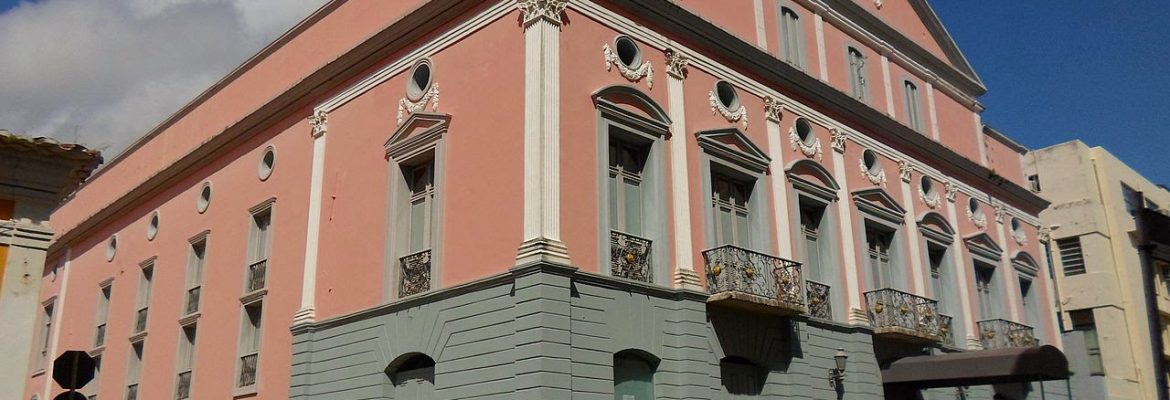Teatro Arthur Azevedo, State of Maranhao, Brazil
In the midst of the Maranhaean cotton cycle, in 1815, two Portuguese merchants, desirous of attending dramatic art and lyric music, and in proper conditions, here in São Luís, like Lisbon, decided to build a large Theater of the same size of the operas of Europe. They were Eleutério Lopes da Silva Varela and Estevão Gonçalves Braga.
The original plan of what would be this great House of Spectacles, provided a facade for Peace Street and the main one for Largo do Carmo. The church reacted and, on the pretext of being anti-religious building a theater next to a church, facing its values, called for the construction embargo.
With a favorable sentence for the Carmelite priests, the Theater began to be built in 1816 with its main facade facing the street of the sun, with all the negative conditions that are known: the building was squeezed among other constructions, with the front streets and Of the lateral, of high automotive circulation with the consequent and disturbing noises, besides the difficulties for parking.
This theater would not be the first but the fourth to be built in the city of São Luís between 1780 and 1816. All small and without adequate spaces and comfort. And so, in just one year of construction, between 1816 and 1817, two private entrepreneurs build a building of such monumentality for the time. This 199 years ago and to date, no other was built by equal or greater public power and the city did not have a fifth of the current population.
Built in neoclassical architectural style, it is the only true example of this style in São Luís. In Brazil, the neoclassical was spread with the arrival of the French artistic mission, brought by Dom João VI in 1816. In Rio de Janeiro, the first building In the neoclassical style only occurred in 1819.
The Union Theater was born, inaugurated on June 1, 1817, two years after the inclusion of Brazil in the United Kingdom of Portugal and Algarves, a fact that gave rise to the name of the building. The project was great. At the time, São Luís was the fourth largest city in Brazil and the 800 theater seats represented 5% of the local population.
In 1852, the Union Theater was renamed São Luiz Theater and, in 1854, it would serve as the birthplace of Apolonia Pinto , the daughter of a Portuguese actress who went into labor in full theater. In dressing room number 1, was born one of the great actresses of the Brazilian theater, who already at the age of twelve charmed audiences with the play “The Gypsy of Paris”. This same year is marked by the first masked ball of São Luís, at the time an event of great repercussion. The remains of Apolonia Pinto are stored in the Theater itself, on the ground floor, in a niche gives access to the audience. There, the actress was also honored with a bronze bust and a plaque alluding to her brilliant cultural trajectory, located in the dressing room itself.
The name Teatro Arthur Azevedo , would come in the 20’s in honor of an important Maranhão theater director. Since then, the place has faced moments of crisis and came to function as a cinema, in addition to suffering restorations that ended up decharacterizing some of its elements. In the 1960s, the state government ended the contract with the movie company that had leased it.
Visit Brazil. Epic Brazil Adventure Route © All Rights Reserved | Monika & Simon Newbound 2017


